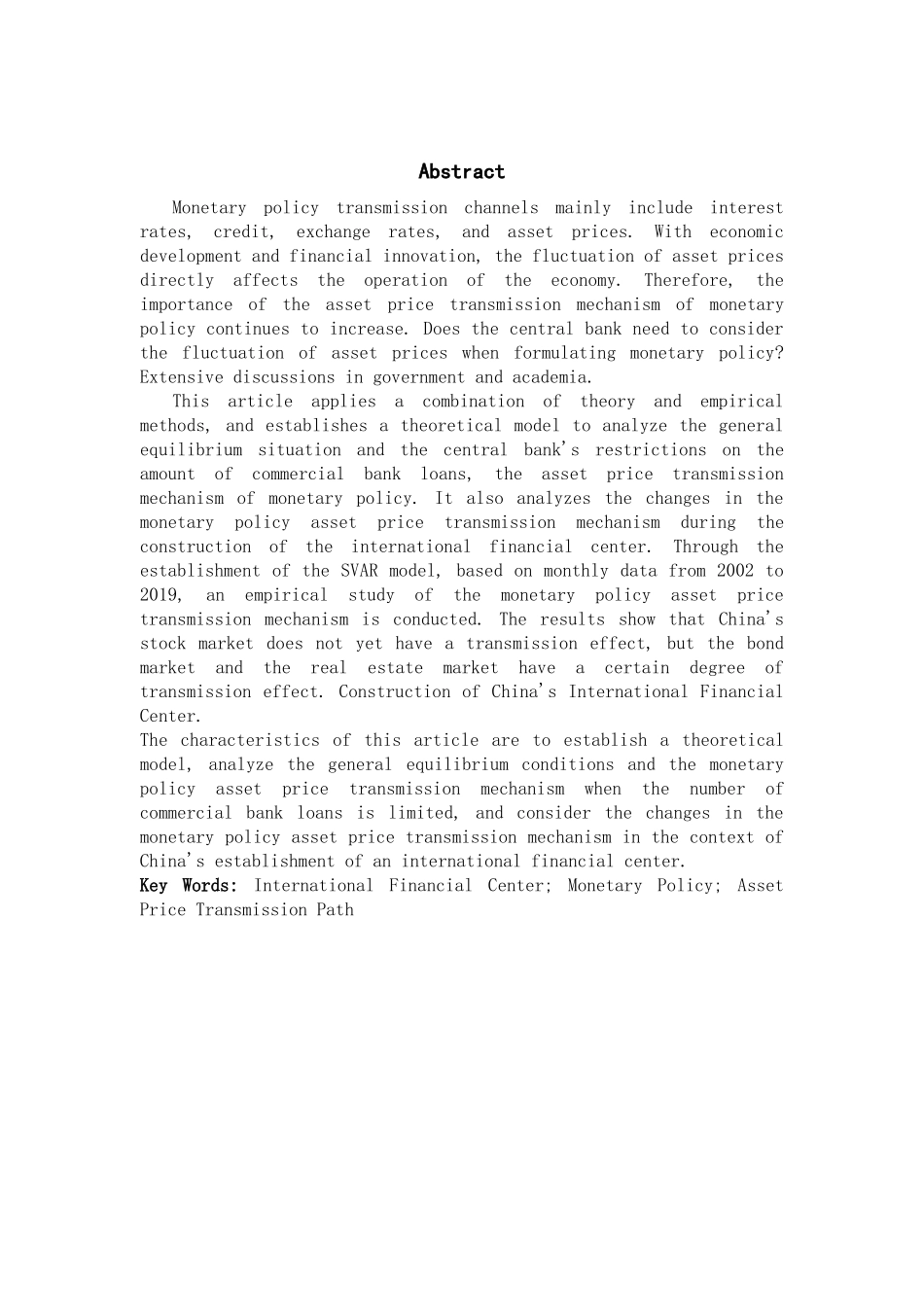摘要货币政策传导渠道主要包括利率、信贷、汇率以及资产价格。随着经济发展和金融创新,资产价格的波动直接影响经济的运行情况,因此货币政策的资产价格传导机制的重要性不断提高,中央银行在制定货币政策时是否需要考虑资产价格的波动,引起了政府和学术界的广泛讨论。本文应用理论和实证结合的方法,通过建立理论模型,分析一般均衡情况以及中央银行对商业银行贷款数量进行限制的情况下,货币政策的资产价格传导机制。并分析国际金融中心建设过程中,货币政策资产价格传导机制的变化。通过建立 SVAR 模型,基于 2002-2019 年的月度数据,对货币政策资产价格传导机制进行实证研究。结果表明,我国股市还不具有资产价格传导效力,但是债券市场和房地产市场已经具有一定程度上的传导效力。我国国际金融中心建设并未疏通货币政策的资产价格传导途径。本文特色在于建立理论模型,分析一般均衡条件以及商业银行贷款数量受到限制时货币政策资产价格传导机制,并考虑在我国建立国际金融中心的背景下,货币政策资产价格传导机制的变化。关键场次:国际金融中心;货币政策;资产价格传导途径AbstractMonetary policy transmission channels mainly include interest rates, credit, exchange rates, and asset prices. With economic development and financial innovation, the fluctuation of asset prices directly affects the operation of the economy. Therefore, the importance of the asset price transmission mechanism of monetary policy continues to increase. Does the central bank need to consider the fluctuation of asset prices when formulating monetary policy? Extensive discussions in government and academia.This article applies a combination of theory and empirical methods, and establishes a theoretical model to analyze the general equilibrium situation and the central bank's restrictions on the amount of commercial bank loans, the asset price transmission mechanism of monetary policy. It also analyzes the changes in the monetary policy asset price transmission mechanism during the construction of the international financial center. Th...












